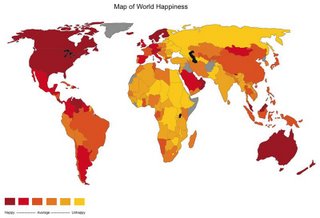Since it’s still the summer silly season and everyone down here is doing retrospectives instead of serious news, I’d thought I’d get in on that.
So over the next while, I’ll be dusting off a few random pieces from the back catalogue you might like to take a look at.
* * * *
Friday, November 04, 2005
Political Correctness: A classic documentary now online
 I thought it was time that a classic documentary on Political Correctness was taken out and dusted off: a forty minute radio documentary put together by Lindsay Perigo and Deborah Coddington for BBC World Service Radio just over a decade ago. (I've transferred it to MP3 and put it online, with links below.) How far have we come since then?
I thought it was time that a classic documentary on Political Correctness was taken out and dusted off: a forty minute radio documentary put together by Lindsay Perigo and Deborah Coddington for BBC World Service Radio just over a decade ago. (I've transferred it to MP3 and put it online, with links below.) How far have we come since then?
The documentary covers the origins and effects of political correctness, the local and overseas manifestations of the phenomenon, and of course takes the piss out of PC whenever possible. The case of Anna Penn is discussed (Penn, if you recall, was the trainee nurse failed for being 'culturally unsafe' -- ahem, 'deficiency-achieved' -- in 1993, despite having a 92% average in the rest of her course) and there is also commentary from and interviews with luminaries such as journalist Carol du Chateau, economist and commentator Walter Williams, then-lecturer Rodney Hide, scientist and former Professor Robert Mann, andphilosopher Gary Hull.
Hull points to post-modernism and its relativist, deconstructionist cousins as being responsible for political correctness. Says Williams, the corruption of language that political correctness demands brings to mind George Orwell's important point in 1984, that "to introduce totalitarianism into society, you first have to corrupt the language."
How far have we come since 1993, and how much closer to 1984? You decide.
- Linked MP3 audio files:
* * * *
Friday, December 16, 2005
Nightclubbing, we're nightclubbing...
Buying beer in a Swedish nightclub is amongst the most expensive purchases on the planet, whereas a Newcastle Brown at a nightclub in Newcastle is dirt cheap. However, Swedish nightclubs do have other significant advantages...
Compare nightclubs in Sweden here, and Newcastle here. [Powerpoint needed.]
Where would you rather spend the night, and with whom?
* * * *
Thursday, April 13, 2006
Is it true that the government that governs best, governs least?
We've all heard the saying 'The Government that Governs Best, Governs Least.' But is it true?
Well, no. It's not the whole truth -- which just shows you how reliable it is to get your philosophy from a slogan on someone else's T-shirt. What's missing from that slogan is what gets too many libertarians confused.
What's missing is this: Now matter what she told you last night, size isn't always important. In particular, size is not the primary consideration when judging governments. What is of primary importance when sizing up a government is not that it's small, but that it protects individual rights.
Let me say that again so you get it. A government governs best when it protects individual rights -- when it protects me from you, and you from me. And in the end that's far more important than whether or not you can fit your government into a small prefab-or a large jail cell--because protecting individual rights is what governments are for.
Size is a consequence of that primary role, not the generator.
To protect me from you and you from me -- in other words, to protect our individual rights -- a government needs to be big enough to be able to do that job properly, and it needs to be properly constituted so they don't do you over themselves.
There are too many example of small but vicious governments that don't do the job; some rare examples of big governments that (sometimes) do -- and some very rare but truly exceptional examples of small governments that very often do, and hardly ever don't. In judging them all, small is better, but proper protection of individual rights is best.
As the T-shirt might well say, 'There's No Government Like No Government -- Unless it's Very, Very Small, and it Properly Protects Individual Rights."
But to say all that, you'd need either a very big chest--or a rather large stomach.
* * * *
Tuesday, August 01, 2006
Money does too buy happiness
 Material wealth doesn't bring happiness? "Bollocks," says a new study in the New Scientist.
Material wealth doesn't bring happiness? "Bollocks," says a new study in the New Scientist.
Not only is freedom what the have-nots haven't got, without it they ain't got lashings of happiness or prosperity either. Turns out generally that the more there is of one, the more of the other. And happiness is what we're here for, right?
According to the analysis, a country's happiness is closely related to its wealth, along with the health and education levels of its people... "There is a belief that capitalism leads to unhappy people," [says the author of the study]. "However, when people are asked if they are happy with their lives, people in countries with good healthcare, a higher [earnings] per capita, and access to education were much more likely to report being happy."Back in the nineteenth-century an otherwise sane but particularly rationalistic German 'scientist' Wilhem Ostwald tried to establish a mathematical formula for happiness. This was a serious undertaking -- he was German. It looked something like this:
HAPPINESS = E2 – W2, "where E denotes the energy spent intentionally and successfully, and W that spent with dislike." Note the squares.Now the New Scientist has shown the formula for per-capita happiness is, quite seriously, more likely something like this:
FREEDOM => PROSPERITY = > HAPPINESS, where the equation has a causal 'arrow' from left to right.Happiness Studies. Where Ethics meets Politics meets Science.
* * * *
Tuesday, October 31, 2006
What is New Zealand’s all time greatest engineering feat?
The Faculty of Engineering at The University of Auckland celebrated its centennial year in 2006, and paid tribute by running a competition amongst alumni to help identify New Zealand's greatest engineering feat. Here were the leading contenders.

When it was built, Grafton Bridge was reputed to be the biggest span, reinforced concrete arch bridge in the world. It was pioneering in its use of reinforced concrete.
 Auckland Harbour Bridge (1959):
Auckland Harbour Bridge (1959):
New Zealand’s longest bridge with the largest span. ‘Clip-on’ extensions, doubling the traffic lanes, were added in 1969.
The Raurimu Railway Spiral (1908):
The famed spiral loop on the railway line between Auckland and Wellington overcomes an abrupt 132m rise in the topography.

Built in disused sewerage holding tanks, the 110m long transparent acrylic tunnel under Auckland’s waterfront was a world first.
The Skytower (1997):
At 328m it is New Zealand’s tallest structure. A feature of its design is its ability to safely withstand an earthquake, severe wind storms or fire.
 Black Magic NZL32 (1995):
Black Magic NZL32 (1995):
The yacht Sir Peter Blake and Team New Zealand sailed to glory in the 1995 America’s Cup race. Black Magic used cutting edge engineering and design technology to beat out the competition.
High-voltage DC link between the North and South Islands (1965):
The under-sea cable in Cook Strait was the world’s largest and longest submarine cable when it was built. The 600MW, 500kV HVDC transmission link integrates power supply between North and South Islands.
World’s first base isolated building (1982):
The William Clayton Building in Wellington was the world’s first base isolated building, designed to withstand earthquakes using a lead/rubber bearing as an isolator and energy absorber.
 Manapouri Power Station:
Manapouri Power Station:
The largest hydro power station in New Zealand. The majority of the station, including the machine hall and two 10km tunnels, was built under a mountain.
Wairakei Geothermal Power Station (1963):
The first in the world to utilise super-heated geothermal water as a steam source for the turbines, and the first to utilise flash steam from geothermal water as an energy source.
McLaren F1 Supercar (1994):
The McLaren F1 was the fastest production car ever built (top speed 386.5 km/h). Most of the McLaren designers were New Zealanders and Team McLaren was founded by Bruce McLaren, a legendary New Zealand F1 driver.
 World’s first flying machine (1903):
World’s first flying machine (1903):
A claim open to interpretation, Richard Pearse flew a powered heavier-than-air machine on 31 March 1903, some nine months before the Wright brothers.
The electric fence (1936):
In 1936, New Zealand inventor William "Bill" Gallagher Snr built one of the world’s first electric fences from a car's ignition coil and a Meccano set. The Gallagher Group of companies is still involved in electric fencing. 
The Modern Jet Boat (1950s):
Bill Hamilton developed the modern jetboat in the 1950s to navigate the shallow fast flowing rivers where he lived. In 1960 a Hamilton jet boat was the first boat to travel up the Grand Canyon.
The Taranaki Gate:
A ‘Taranaki Gate’ is made from battens strung together and connected to a fence by loops of wire. The phrase has come to mean a practical approach to a common problem. 
John Britten Motorcycles (1990s):
John Britten designed a world-record-setting motorcycle that was years ahead of contemporary design.
In 1994 it broke four world speed records in its class.
* * * *
Thanks for browsing the archives.
And speaking of blasts from the past, here’s The Saints from 1978:


3 comments:
No way the McLaren F-1 could ever be considered an example of New Zealand engineering. It was designed by in England by a South African. His name is Gordon Murray. The engine was designed by a team of German engineers at BMW (a very interesting story how that came about, F-1 very nearly got a Honda engine). Significant major component assemblies came from English race car suppliers located around "racing valley". Remaining components came from UK and European T-1 and T-2 suppliers. Some components (such as the audio system) came from USA.
While there may have been a some New Zealand born engineers and technicians working at McLaren, claiming the car as an example of Kiwi engineering is akin to claiming Tiger Wood's golf successes are an example of New Zealand achievements in international sports. After all, he had a Kiwi caddy....
Baaaaah humbug!
Happy New Year!
LGM
I have just spent my holidays around the southern hydro lakes...Takapo, Pukaki, Benmore etc. The imagination of the engineers and the scale of this hydro electric project(s) always impresses me. This is (in my view) NZ's most impressive engineering project. What I admire most however, is how the natural beauty was not just retained but actually enhanced in man's attempt to harness nature to improve our lives.
Sadly, there is no chance that such a project would ever be undertaken these days. The environment is now more important than improving our standard of living.
Julian
How about the Raurimu spiral on the main trunk line. It was designed & constructed in the 1880's.
Post a Comment